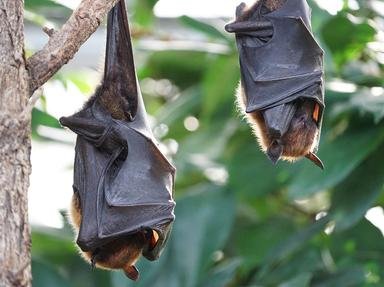Quiz Answer Key and Fun Facts
1. It is imperative that bats learn to fly quickly, because some bats, you see, live very high up. Some live in caves, such as the big-eared bat, so they can be several hundred feet from the ground. Which of these is a major cause of cave-dwelling baby bat deaths?
2. Which of these bats is most likely to learn to fly at the youngest age?
3. Most bats have to wait until they are nearly fully grown to be able to fly. Who takes care of the bat until this time?
4. A main reason a baby bat does not fly until later on in life is the fact that their patagium is not fully developed. What is the patagium?
5. The gestation period of a bat is anywhere from forty days to six months, depending on the size of the bat. In what time period do most bats, such as the fruit bat, usually give birth?
6. Bats usually only give birth to one pup at a time, and will occasionally give birth to twins. Is it at all possible for a bat to give birth to more than two bats at one time?
7. A microbat, like the hollow-nosed bat, for instance, will give birth to a pup that is about 25% of her body size. Why are the babies so large?
8. Most microbats, like mouse-tailed bats, live in caves. When the parents go off to feed, what happens to the baby bats?
9. When the female bats give birth to their young, are they mostly male, or mostly female?
10. When the bat is finally ready to fly, it will drop from its roost, whether it be a cave or a tree, and flap its wings. Well, sort of. Bats, unlike birds, do not flap their wings. Instead, they:
Source: Author
salami_swami
This quiz was reviewed by FunTrivia editor
crisw before going online.
Any errors found in FunTrivia content are routinely corrected through our feedback system.

